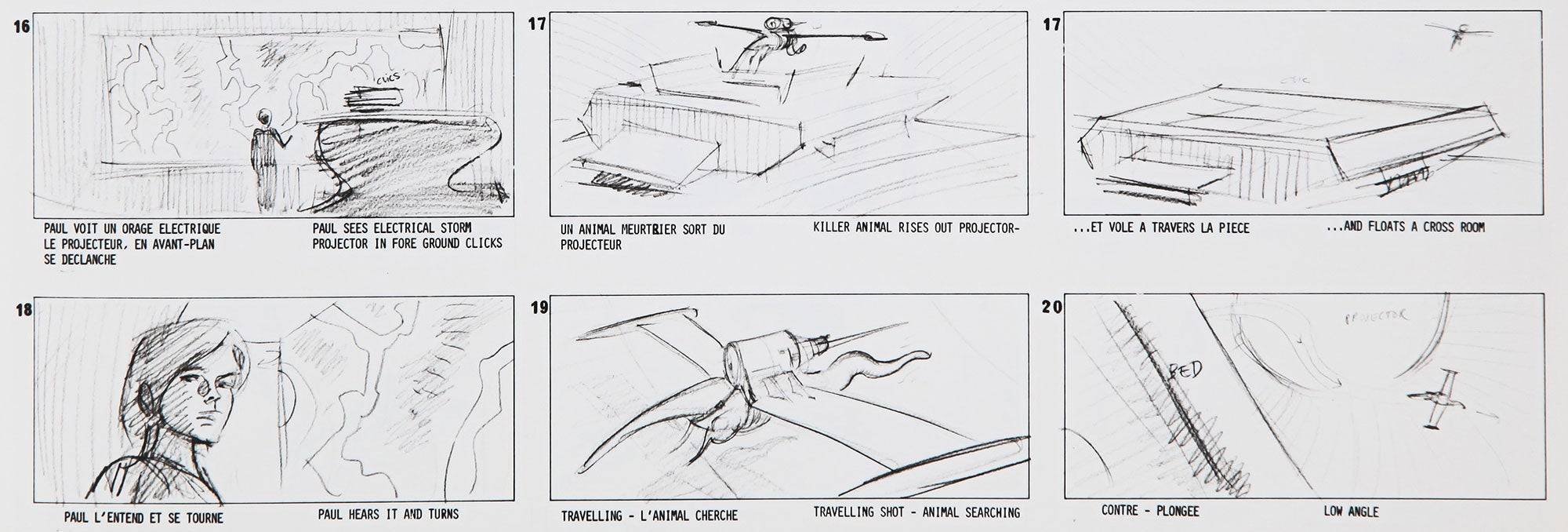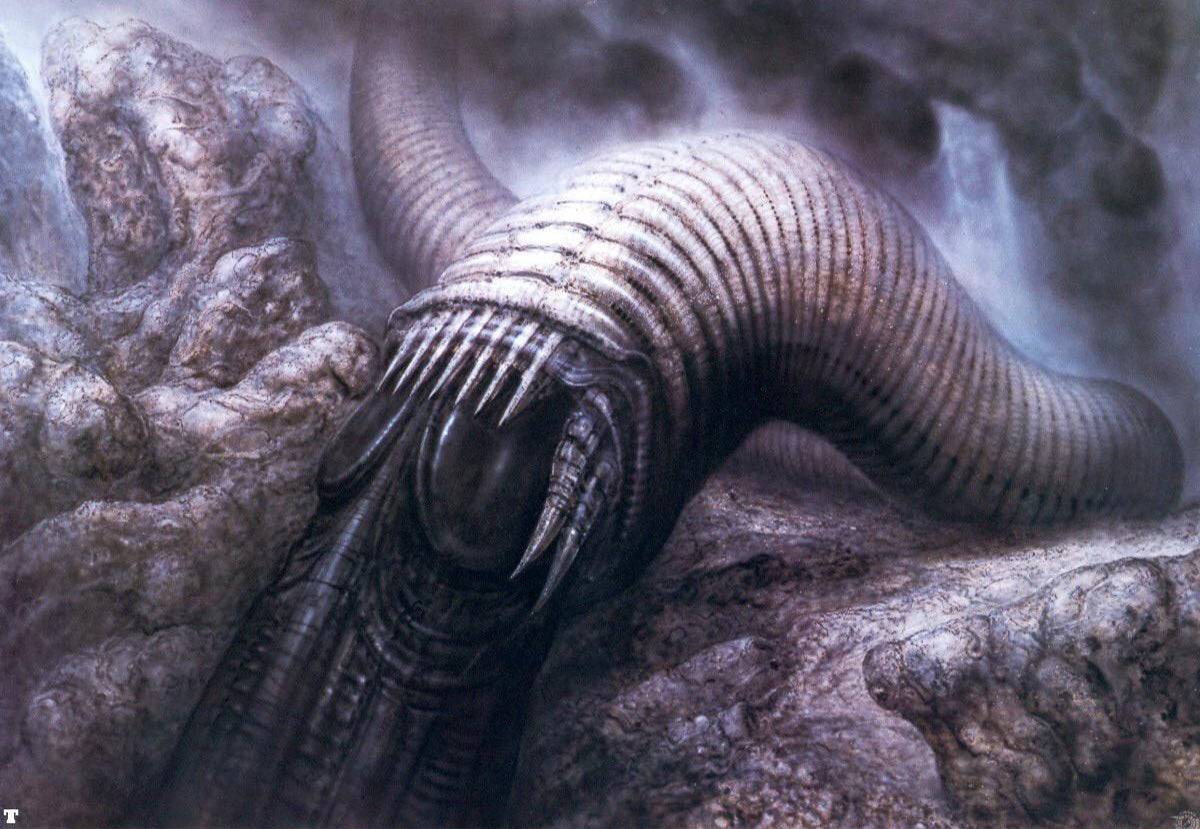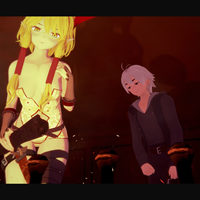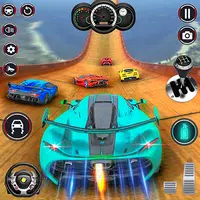by Zachary May 05,2025
"It would be very easy to make a bad film of Dune…" –Ridley Scott, South Bend Tribune, 1979
This week marks the 40th anniversary of David Lynch's Dune. Initially a box office disappointment, this $40 million film has since cultivated a dedicated cult following over the past four decades since its release on December 14, 1984. The film's unique style stands in stark contrast to Denis Villeneuve's recent adaptations of Frank Herbert's iconic novel. Renowned filmmaker David Lynch was announced to direct Dune for producer Dino De Laurentiis in May 1981, following Ridley Scott's departure from the project after his success with Blade Runner and Gladiator.
Until now, little was known about Scott's version of Dune, which he developed over seven or eight months for De Laurentiis. Thanks to the diligent efforts of T.D. Nguyen, a 133-page October 1980 draft of Scott's abandoned Dune film, penned by Rudy Wurlitzer (Two-Lane Blacktop, Walker), was unearthed in the Coleman Luck archives at Wheaton College and subsequently shared with this author.
When Scott took on the project shortly after the success of Alien in 1979, Frank Herbert had already crafted a two-part screenplay that was overly faithful and not particularly cinematic. Scott, after considering using some scenes from Herbert's script, ultimately enlisted Wurlitzer for a complete rewrite, beginning pre-production at Pinewood Studios. Like Herbert's and Villeneuve's adaptations, this version was envisioned as the first of two parts.
The process of adapting Dune was described by Wurlitzer as one of the most challenging tasks he'd undertaken. He told Prevue Magazine in 1984, "It took more time to break it down into a working outline than to write the final script. I believe we kept to the spirit of the book but, in a sense, we rarefied it. We interjected a somewhat different sensibility."
Scott himself praised the script in a 2021 interview with Total Film, stating, "We did a script, and the script is pretty fucking good."
The reasons behind the collapse of Scott's Dune were multifaceted, including emotional fallout from the death of his brother Frank, his reluctance to shoot in Mexico as De Laurentiis demanded, a budget exceeding $50 million, and the allure of the Blade Runner project. A significant factor, as revealed by Universal Pictures executive Thom Mount in the book A Masterpiece in Disarray – David Lynch's Dune, was that "Rudy’s version of the script did not receive unanimous, glowing enthusiasm."
Was Wurlitzer's adaptation a poor cinematic execution of Herbert's sprawling story? Or was it too dark, violent, and political for a commercial studio blockbuster? You can read our detailed script analysis and decide for yourself.
Despite attempts to contact Rudy Wurlitzer (age 87) and Ridley Scott for this article, both were unable or unwilling to participate.
The October 1980 draft opens with a dream sequence depicting hot deserts and apocalyptic armies, signaling Paul's "terrible purpose" from the outset. Ridley Scott's signature visual flair is evident in descriptions like "birds and insects become a whirling hysteria of motion." This cinematic vision continues throughout the script.
 Frank Herbert's Dune (First Edition)As Scott told Total Film, "We did a very good take on Dune, because early days, I’d work very, very closely with the writer. I was always glomming the look of the film onto what he or she was writing."
Frank Herbert's Dune (First Edition)As Scott told Total Film, "We did a very good take on Dune, because early days, I’d work very, very closely with the writer. I was always glomming the look of the film onto what he or she was writing."
The dream sequence is experienced by Paul Atreides, who awakens to rain pelting the windows of Castle Caladan. In this version, Paul is not the hunky Timothée Chalamet but a 7-year-old with long blonde hair, about to face the Reverend Mother's test with "the box." The script crosscuts Paul's recitation of the Litany Against Fear with his mother Jessica's, emphasizing their psychic bond. As in Lynch's version, visuals of a burning hand and melting flesh appear, though they're not real.
After passing the test, Paul uses The Voice to retrieve a sword from a guard and nearly kills a sleeping Duncan Idaho to test his warrior skills. This version of Paul exhibits a "savage innocence."
"Rudy Wurlitzer’s version of Paul is far more assertive," notes Stephen Scarlata, producer of the documentary Jodorowsky's Dune. "He actively takes charge. We even see a flash-forward of his growth from age 7 to 21, where his relentless training leads him to surpass Duncan Idaho. Personally, I prefer Lynch’s depiction of Paul. There’s an added tension in believing Paul might defeat Gurney, only to realize he doesn’t. This vulnerability makes us feel more fear and concern for him, especially when Paul and Jessica are forced to escape."
The now 21-year-old Paul is described as a master swordsman, "handsome, charismatic, regal." Duncan, taking Gurney's place, has become "broader with white hair and beard" and exhibits humor akin to Jason Momoa's portrayal.
DUNCAN
It is a teacher's duty to have his
pupil someday surpass him.
(smiling)
But, don't think you can relax. This
is just one level you have reached.
There are other, more perilous,
methods to master. But, not now.
Now we are going to get properly
drunk.
The script then shifts to a scene outside the castle, where Jessica observes a gardener raking white pebbles into patterns. Suddenly, it begins to rain, and the gardener falls to his knees, proclaiming, "the Emperor is dead." This pivotal moment, as noted by screenwriter Ian Fried, who worked on Legendary's Spectral and an unproduced modern version of The Island of Dr. Moreau, adds a new twist to the narrative.
"I absolutely love the moment of Jessica looking out across the castle at the gardener raking white pebbles into patterns," Fried told IGN. "Then all of a sudden it starts raining and the gardener falls to his knees, prostrates himself, looks up at the sky and says, 'the Emperor is dead.' I get chills just saying that. On the other hand, that's not at all from the book. There's so much material in Dune that to be adding new stuff is probably not what most people would have wanted or would want now. That was a really, really interesting part of the script, that the catalyst for everything is the Emperor dying."
The story then moves to the "Emperor's Inner Kingdom," a mystical place surrounded by Snow Peaks and a Mandala. Here, members of the Twenty-Four Great Houses gather to mourn the Emperor as colorful energies oscillate above his funeral bier. The dead Emperor speaks through an old Medium, bequeathing Duke Leto Atreides the Planet Dune/Arrakis to combat the gathering darkness.
The darkness manifests through Leto's cousin Baron Harkonnen, who, via Feyd-Rautha, offers to split Arrakis' spice production duties to avoid conflict. The Duke rejects this proposal, prompting the Baron to assert, "He who controls the spice controls the universe."BARON
(to DR. YUEH)
Understand the position well
before you leave. Who controls
Dune controls the Spice, and
who controls the Spice controls
the Universe. Without me, your
Duke controls nothing.
"Normally I have credited Lynch with this great line," Mark Bennett of DuneInfo told us. "Given that this was a De Laurentiis project script, I wonder if Lynch read it and borrowed that line, or came up with it independently?"
A scene reminiscent of the Lynch version occurs during the Atreides family's departure from Caladan aboard a Guild Heighliner, where they encounter a Navigator. This spice-mutated creature, not revealed in the books until Dune Messiah, is described as "an elongated FIGURE, vaguely humanoid with finned feet and hugely fanned, membranous hands, floating in a transparent outer container, like a loose, flexible skin; a fish in a strange sea with eyes of Total Blue." The Navigator takes a pill, falls into a coma, and plots the Heighliner's course with long musical intonations to "Engineers," reminiscent of Scott's later film Prometheus.
"I absolutely loved that they were able to show the Navigator," adds Fried. "Even though I love the Denis Villeneuve movies, I'm really disappointed we didn't get to see his take on that. A missed opportunity."
The Atreides family arrives on Arrakis, where descriptions of their Arakeen fortress evoke the aesthetic of Scott's Legend. The world feels medieval, emphasizing swords, feudal customs, and fealty. Bosch-like Dew Collectors gather moisture in the castle gardens. This medievalization of Herbert's world aligns with Scott's concurrent development of a Dark Ages "cowboy" version of Tristan and Isolde.
At a weather station, Liet Kynes introduces his daughter Chani to the Duke and Paul. The ecological impact is highlighted through dissected native creatures, with Kynes explaining how spice harvests devastate the environment. Chani accompanies them on their Ornithopter trip through the desert, her interactions with her father conveyed through furtive glances. The flight through the smoky chimneys of a massive factory ship echoes the hellish cityscapes of Blade Runner. As a worm attacks the ship, Kynes and Chani offer to make their way on foot so the last two factory workers can escape on the Duke's 'Thopter.
This scene is intercut with house servant Shadout Mapes gifting Lady Jessica a crysknife. Jessica hears city dwellers begging for water outside her castle window.
The streets of Arakeen are depicted as squalid urban "ghettos" with homeless peddlers, dilapidated vehicles, and families seeking shelter from the sun. Class disparity is vividly portrayed, drawing inspiration from Gillo Pontecorvo’s The Battle of Algiers.
A new action-packed scene finds Paul and Duncan following a Harkonnen agent into a trading post, leading to a bar fight. Duncan swings an axe like Conan the Barbarian, while Paul kills a man with a finger thrust to the throat.*DUNCAN picks up the axe.
DUNCAN
(looking at it)
Nasty little instrument.
Not very well balanced, but it will
have to do.With a short snap to his wrist he
throws it at BURLY MAN coming
towards him holding a long iron
bar. The axe strikes him in the
chest, splitting him in two.*
"That feels like a bar brawl you’d find in a Burt Reynolds or Walter Hill action movie," says Scarlata. "The fight scene feels out of place because it makes Paul seem too invincible too soon. His journey is about growth - learning to survive, adapt, and lead. If he’s already effortlessly beating enemies, we lose the tension/fear for his safety key to making his transformation meaningful."
During this brawl, they meet the stoic Fremen leader Stilgar, who later decapitates a lone Harkonnen at a smuggler's market.
The script also features a scene of the Bene Gesserit Jessica levitating as she meditates. She and the Duke decide to conceive a child that night, with Jessica's dialogue explicitly stating, "When you release your seed it will be like sacred oil poured into an altar fire."
After receiving a secret message from a blinking insect, Dr. Yueh shares a moment of veiled regret with Paul before sending him into the city for a night of freedom. Paul follows a homeless boy into a Fremen Spice Den, inhaling blue spice vapor and experiencing visions of his unborn sister Alia intoning "Maud'Dib." He then encounters an Old Crone overseeing a pit with a red ball and a tiny snake-like sandworm, which Paul hypnotizes and places in a conch shell.
After poisoning Thufir over a chess game, the traitor Yueh deactivates the house shield, allowing Harkonnen Death Commandoes to enter the castle. Paul returns from the slums to find his quarters under attack by a Hunter-Seeker, described as "a bat-like creature with a cobra's head." Paul decapitates it upon Jessica's entrance.
 This Hunter-Seeker design is reminiscent of the "flying creature with a bomb" from Alejandro Jodorowsky’s unmade Dune, as seen in storyboard art."The Hunter-Seeker scene is fascinating to me," Scarlata says. "Introducing a biological twist to the usual mechanical device mirrors Alejandro Jodorowsky’s unmade Dune from a few years earlier, where the Hunter-Seeker is a flying creature with a bomb strapped to its back… Paul slows his heart rate, disarms the creature, and throws the bomb out the window. Both versions experiment with an animalistic take."
This Hunter-Seeker design is reminiscent of the "flying creature with a bomb" from Alejandro Jodorowsky’s unmade Dune, as seen in storyboard art."The Hunter-Seeker scene is fascinating to me," Scarlata says. "Introducing a biological twist to the usual mechanical device mirrors Alejandro Jodorowsky’s unmade Dune from a few years earlier, where the Hunter-Seeker is a flying creature with a bomb strapped to its back… Paul slows his heart rate, disarms the creature, and throws the bomb out the window. Both versions experiment with an animalistic take."
Duke Leto manages to decapitate several Death Commandoes before Yueh shoots him with a dart. Duncan arrives to save his poisoned Duke but is stabbed by Yueh, whom Duncan then cuts in half. Yueh's only motivation is his own survival, needing an antidote from the Baron. Jessica places a poison gas capsule in the dying Duke's mouth before they escape in a 'Thopter. Duncan fends off deadly Sardaukar, dying in the process, allowing Paul and Jessica to flee. A Harkonnen troop carrier drives over the bodies of 20 dead Atreides soldiers, emphasizing the graphic, R-rated violence.
Paul and Jessica's escape into the deep desert is intense, with Paul's piloting maneuvers causing G-force ripples on their cheeks. After a crash-landing, they wait out a sandstorm in a Stilltent before donning Stillsuits and seeking the Fremen. A scene akin to Villeneuve's film shows Paul confronting a massive sandworm face-to-face without fear.
This draft notably omits the incest subplot between Paul and Jessica present in earlier versions, which had incensed both Herbert and De Laurentiis.
"He wanted to do an incest movie!" Herbert exclaimed to The Sacramento Bee in 1982. "Can you imagine the effect that would have had on the Dune fans?"
Wurlitzer confirmed to Prevue, "In one draft I introduced some erotic scenes between Paul and his mother, Jessica. I felt there was always a latent, but very strong, Oedipal attraction between them, and I took it one note further. It went right in the middle of the film, as a supreme defiance of certain boundaries, perhaps making Paul even more heroic for having broken a forbidden code."
Although this draft avoids the incest subplot, it includes a scene where Paul and Jessica slide down a sand dune, losing their supplies.
Eventually, they find refuge in an ancient cave within a giant worm carcass. At dawn, a group of Fremen led by Stilgar arrives on a Sandsled. Jamis challenges Paul to a death duel, which Paul accepts eagerly. Jessica gives him advice and the crysknife gifted by Shadout Mapes, proclaiming him the Lisan al-gaib.
The battle inside the worm carcass is brutal and swift, with Paul ultimately killing Jamis. Some Fremen take items from Jamis' body, claiming to be "a friend of Jamis," as Paul reflects on the cost of killing. He sheds tears for his fallen foe, which the Fremen marvel at.That night, the Fremen perform a Spice ceremony, passing a bowl around like a "peace pipe." Jessica does not inhale, but Paul does, earning the name Maud'Dib. They confer with Kynes, who is aware of the Lisan al-gaib legend but supports it to further his goal of transforming Arrakis.
Paul learns that Jamis' wife, Chani, is now his mate. After a brief moment of grief, Chani accepts Paul and Jessica as her new family. Paul offers Jamis' water to Chani, who refuses, so he pours it into the tribe's reservoir.
The Fremen then embark on a Sundancer, a giant trimaran with colored sails, to cross the great salt flats. Kynes encourages Chani to stay close to Paul and never show ambivalence. Chani, though a believer, is wary of Jessica and Paul's dictatorial tendencies.
*PAUL
I ask for acceptance without
reservation, even for that which
you cannot understand.CHANI
As we share the same purpose, I
withhold nothing from you.*
"A true leader is never a clear model of Christian goodness," Wurlitzer noted in 1984. "Many times he is ruthless, very determined, and willing to make sacrifices to serve certain ends. That doesn’t mean he has to be a consummate Machiavellian, only that certain shadings in his character make him a little dangerous, a bit abrupt. Even Christ drove the merchants out of the temple."
"I feel like Paul is almost a cipher," Fried observes. "He's too much of a perfect Messiah. It's very hard to relate to him. It's not clear, based on this take on the material, that Paul's even the main character."
The script's climax features a Water of Life ceremony led by a Shaman with three breasts and male genitals, who performs an erotic dance as a 10-foot-long sandworm emerges, transforming water into the Water of Death. Jessica drinks it, surviving the ordeal and becoming the new Reverend Mother. All Fremen now believe Paul is their Messiah. The script ends with Jessica calling a giant sandworm, hinting at Paul's upcoming ride, though it is not shown.
 H.R. Giger's exceedingly phallic sandworm design.Frank Herbert's Dune novels aimed to illustrate the dangers of charismatic leaders. While Lynch's adaptation largely ignored this theme, Villeneuve's two-part adaptation and his planned Dune Messiah film emphasize it. Wurlitzer's October 1980 script, though potentially incomplete or intended as the first of two parts, presents Paul as a confident young man accepting his destiny as a universal dictator, with characters like Chani and Kynes complicit in his rise to achieve their ecological goals.
H.R. Giger's exceedingly phallic sandworm design.Frank Herbert's Dune novels aimed to illustrate the dangers of charismatic leaders. While Lynch's adaptation largely ignored this theme, Villeneuve's two-part adaptation and his planned Dune Messiah film emphasize it. Wurlitzer's October 1980 script, though potentially incomplete or intended as the first of two parts, presents Paul as a confident young man accepting his destiny as a universal dictator, with characters like Chani and Kynes complicit in his rise to achieve their ecological goals.
This script was conceived during the dawn of modern science fiction cinema, following Star Wars and Alien. It may have been too ambitious in expecting audiences to embrace a revisionist, R-rated sci-fi movie with real-world concerns like ecological devastation and exploitation.
As Scott noted in 1979 to the Tribune, "For years sci-fi has been treated as underground material, yet there's always been a vast and enthusiastic readership for sci-fi novels. Dune has sold 10 million copies."
The script also improves upon character interactions, showing relationships visually that were absent in Lynch's film. Instead of the Emperor's convoluted plan, it is his death that catalyzes the Duke's downfall, a more sensible approach given the Emperor's minor role in the story.
The initial draft of Lynch's version ended with Paul and Jessica fleeing a burning Arrakeen castle, while Wurlitzer's script concludes with the Water of Life ceremony and their acceptance into the tribe. Villeneuve split the difference by ending his first film with the Paul/Jamis duel.
Given its grimdark and adult themes, it's unsurprising that Wurlitzer's script did not garner universal studio approval. "I don't think it would have made Dune fans happy," says Mark Bennett, who has run his Dune fan site for nearly three decades. "Too many deviations from the novel and too much 'magic,' something that Herbert's novel avoids. A bit like the Lynch Messiah script, without the second half you don't know how things would have played off. I'm assuming that Part 2 would have been a guerrilla war with the Harkonnens, Paul and Feyd would have had their duel at the end, then Paul becomes Emperor… Who has ruled the Universe since the Emperor died?"
The legacy of Wurlitzer and Scott's Dune includes H.R. Giger's phallic sandworm design and Harkonnen furniture made from skeletons, now housed at the Giger Museum in Gruyères, Switzerland. Vittorio Storaro, originally set to lens this version, later worked on the 2000 Sci-Fi Channel miniseries Frank Herbert's Dune. Scott and De Laurentiis eventually collaborated on Hannibal, which grossed $350 million worldwide. Some script elements also influenced Blade Runner and have similarities to Gladiator II.
"Wurlitzer's work here – which Scott himself referred to as 'a decent distillation of Frank Herbert' – is arguably the only adaptation of the material for the big screen which gives the novel’s ecological, political, and spiritual aspects equal footing," Scott stated. Lynch’s adaptation focused more on the spiritual, while Villeneuve’s emphasized the perils of charismatic leaders.
"The ecological aspect of Dune is covered in this script in a way it's never been covered in any other piece of material," concludes Ian Fried. "That's one of the strengths of this adaptation: It feels like it's important to the story being told. It doesn't hit you over the head with it. It genuinely is a consequence of what man has done to this planet, the ecological issues that have developed around spice mining. There are a lot more clear motivations in the Ridley Scott Dune script for a larger variety of characters."
Perhaps in the future, another visionary filmmaker will adapt Dune with a focus on its ecological themes. As Herbert's book approaches its 60th anniversary, its themes of environmental decay, the dangers of fascism, and the need for societal awakening remain as relevant as ever.
Zenless Zone Zero Update Cycle Leak Hints at Future Content cadence
All Mavuika Materials, Kit, and Constellations in Genshin Impact
Counterfeit Bank Simulator: Minting Solution for Economic Crises
Marvel Rivals: Season 1 Dracula Explained
Best Xbox Game Pass Games For Kids (January 2025)
Solo Leveling: Global Tournament Draws Near
Power Rangers: Uncover Hidden Secrets in Rita's Carnival and Cemetery
Roblox: Anime Auras RNG Codes (January 2025)

Guild of Spicy Adventures 0.55
Download
Impossible GT Stunt Sports Car
Download
Bar Abierto Caça Niquel
Download
Crossword Islands
Download
My Taco Shop: Food Game
Download
4Play - Mau Binh Online
Download
Word Games: Sex Word Puzzle
Download
VEGA - Game danh bai doi thuong
Download
Offline Mini Games All in One
DownloadSAG-AFTRA, Game Companies Still at Odds Over AI Terms
Dec 22,2025

E.T.E Chronicle Release Schedule Set
Dec 22,2025

Donkey Kong Amiibo Preorders Open Now
Dec 22,2025

Honor of Kings to Join 2025 Esports World Cup
Dec 22,2025
Konami Celebrates Silent Hill 2 Remake Milestone of 2 Million Sales
Dec 21,2025